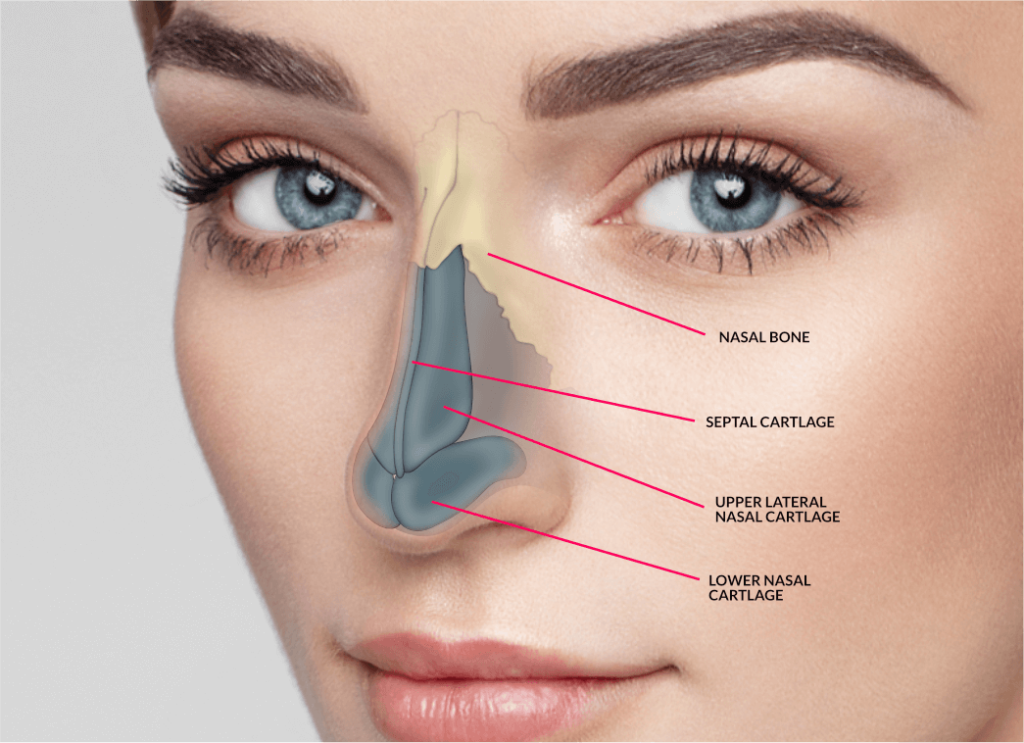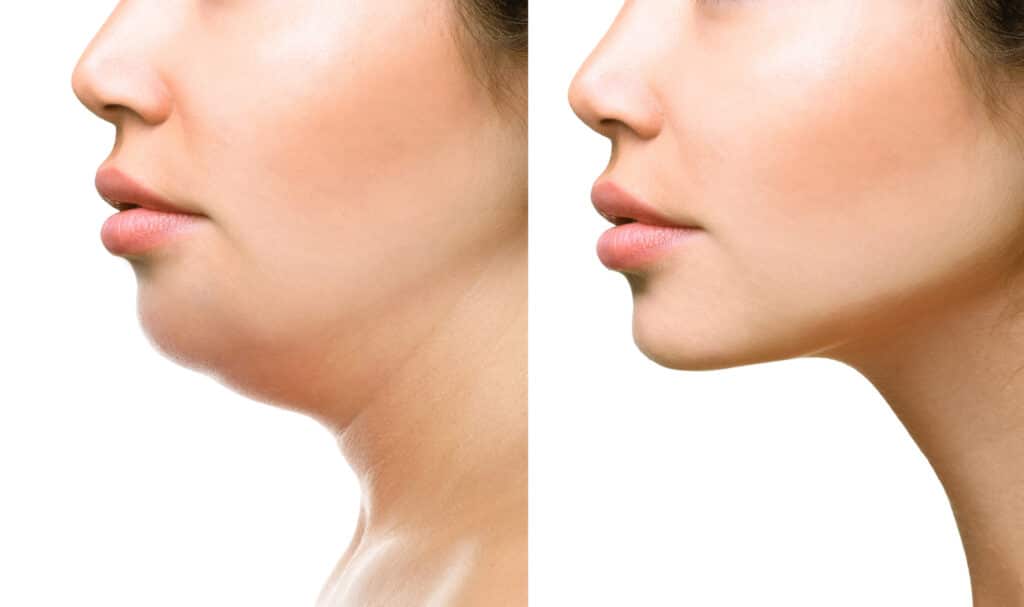Understanding Rhinoplasty and Its Goals
Procedure Types
Rhinoplasty, often known as a “nose job,” is a surgical procedure to change the nose’s shape. It splits into two main types: cosmetic and functional. Cosmetic rhinoplasty focuses on improving the nose’s appearance. Functional rhinoplasty aims to fix problems that affect breathing.
Cosmetic procedures tailor to individual desires for a more pleasing look. They can adjust size, shape, or symmetry. Functional surgeries correct issues like deviated septums, enhancing airflow through the nostrils.
Realistic Expectations
Setting realistic expectations is crucial in rhinoplasty. Surgeons emphasize that while changes can be significant, perfection is unattainable. Each patient has unique facial features and skin types that influence outcomes.
Patients should discuss their goals with surgeons to ensure they align with what is achievable. This clarity helps in avoiding disappointment and fosters satisfaction with the results.
Enhanced Outcomes
Rhinoplasty offers more than just aesthetic improvements. It can significantly enhance breathing for those with nasal obstructions. Improved airflow leads to better sleep quality and overall well-being.
Moreover, by altering the nose’s shape or size, surgeons can achieve facial harmony. This balance between facial features boosts confidence and self-image. Patients often report increased happiness with their appearance post-surgery.
Preparing for Your Rhinoplasty Procedure
Consultation
A thorough consultation is crucial. It ensures that your goals align with what’s achievable through rhinoplasty. This step involves discussing your medical history, expectations, and potential outcomes with a board-certified plastic surgeon. They assess your nasal skin and structure to tailor the procedure uniquely for you.
During this time, it’s vital to ask questions. Clarify any doubts about the surgery’s risks and benefits. This dialogue helps build trust between you and your surgeon.
Health Evaluation
Pre-operative tests are necessary. They determine if you’re fit for the surgical procedure. Common evaluations include blood tests and a physical examination focusing on nasal passages and overall health.
Your surgeon might also review medications you’re currently taking. Some may need pausing or adjusting before surgery to avoid complications.
Lifestyle Adjustments
Making lifestyle adjustments is essential for a smooth recovery. Smokers are advised to quit at least two weeks before the procedure. Smoking can hinder healing by restricting blood flow.
Avoid certain medications and supplements that can increase bleeding risk, such as aspirin or ibuprofen, for two weeks before surgery.
Navigating the Recovery Timeline
Initial Days
After preparing for your rhinoplasty, understanding the recovery process is crucial. The first few days post-surgery are critical. Patients need to rest with their head elevated to reduce swelling. Sleeping on your back is advised, avoiding pressure on the nose.
Pain and discomfort may peak during this period. It’s essential to follow your surgeon’s advice on medication and care.
First Week
The first week marks significant milestones in the recovery journey. Most patients see their surgeon for a post-operative checkup. Here, splints or packing inside the nose might be removed.
Bruising and swelling are common but will start to subside. Strenuous activities should still be avoided to ensure proper healing.
Returning to Routine
By the end of the second week, many patients feel confident enough to return to work and some normal activities. However, it’s important to avoid any activity that could impact the nose directly or indirectly through increased blood pressure.
Full recovery and final results can take up to a year as the nose fully heals and adapts to its new shape. Patience during this entire process is key.
Managing Swelling Stages Effectively
Swelling Progression
Post-surgery, swelling is a common response. It impacts appearance significantly. Initially, the face might look unrecognizable. This phase can be alarming but is a normal part of healing.
Swelling peaks within the first 48 hours. Gradually, it subsides over weeks to months. The true professional knows managing expectations is key during this process.
Minimizing Techniques
To reduce swelling, several strategies work well. Elevation of the head, especially during sleep, prevents fluid accumulation. Cold compresses are highly effective in the initial days post-op.
They should not be applied directly on the surgical area but rather on adjacent regions to avoid complications. These methods demonstrate how talent and knowledge combine to win against discomfort.
Duration and Results
Typically, noticeable swelling diminishes after three weeks. However, minor swelling can persist for up to a year. The final shape of the nose becomes apparent once this subsides.
Patients often see substantial improvement within six months. It’s essential to remember that patience pays off in this journey towards recovery.
Addressing Asymmetrical Healing Concerns
Common Occurrence
Asymmetrical healing post-rhinoplasty is not unusual. Patients often notice differences in swelling or shape during the initial months. This is typically a temporary condition that resolves as the healing progresses.
It’s crucial to remember that each side of the nose may heal at its own pace. Factors such as skin thickness, surgical techniques, and individual healing responses play a role. Patience is key as these variances usually even out over time.
Monitoring Progress
Regular follow-ups with your surgeon are essential. They can assess whether the asymmetry is within normal limits or if it indicates a need for intervention.
Surgeons can provide reassurance and track the healing process closely. They might suggest treatments like massages or minor adjustments if necessary. Keeping an open line of communication helps address concerns promptly.
Revision Consideration
In cases where asymmetry persists beyond the expected healing timeline, revision surgery might be an option. It’s generally advised to wait at least a year before considering this step, allowing full healing and tissue stabilization.
Revision surgery should be approached with caution and thorough discussion with your surgeon. They will evaluate the risks and benefits based on your specific case.
Coping with Post-Surgery Pain
Pain Expectations
After rhinoplasty, patients should anticipate some level of discomfort. This is a natural part of the healing process. Skilled surgeons ensure that pain is manageable. They use general anesthesia during the procedure to prevent immediate post-operative pain.
Patients typically experience swelling and bruising around the nose and eyes. These symptoms can contribute to overall discomfort but usually subside within a week or two. It’s important for patients to have realistic expectations about this period.
Pain Management
Effective pain management is crucial for a smooth recovery. Surgeons often prescribe medications to help control pain after surgery. These may include over-the-counter pain relievers or stronger prescription drugs, depending on the patient’s needs.
It’s essential for patients to follow their surgeon’s instructions closely when taking these medications. Doing so helps minimize discomfort and prevents complications.
Communication Is Key
Open communication with the surgical team is vital for addressing any concerns about pain. Patients should feel empowered to share how they’re feeling throughout their recovery.
A surgeon’s compassion and bedside manner play significant roles in easing a patient’s worries. If pain seems excessive or unusual, it’s important for someone to reach out to their surgeon immediately. This ensures that any potential problems are addressed promptly.
Achieving Optimal Rhinoplasty Results
Post-Operative Care
Following post-operative instructions closely is crucial for achieving the best outcomes. Patients must adhere to their surgeon’s guidance on cleaning, medication, and activity levels. This discipline helps prevent complications and ensures a smoother recovery process.
It’s essential to manage expectations and understand that discomfort might persist beyond the initial pain management phase described previously. However, strict adherence to care instructions significantly enhances the healing journey.
Healing Time
Time plays a pivotal role in the rhinoplasty recovery process. Initially, swelling and bruising are common, but these symptoms gradually subside. It can take up to a year for the nose to fully heal and settle into its final shape.
Patience is key during this period. Rushing or expecting immediate results can lead to frustration. Remember, the true outcome of rhinoplasty unfolds over months as the tissues heal and adapt.
Healthy Lifestyle
Maintaining a healthy lifestyle post-surgery cannot be overstated in its importance. A balanced diet, adequate hydration, and avoiding smoking contribute significantly to optimal healing.
Protecting the nose from potential injuries is also vital. Engaging in contact sports or activities that pose a risk to the face should be avoided until full recovery is confirmed by your surgeon. Such precautions safeguard against setbacks and ensure the longevity of your results.

Post-Op Care and Follow-Up
Initial Visits
After rhinoplasty, the first month post-op is crucial. Patients usually visit the surgery center within a week. This allows the doctor to assess healing and remove any stitches.
These early visits are vital for monitoring recovery. They ensure complications are caught early. The office staff, including Nurse Tani, provides excellent care during these appointments. They offer guidance on how to care for the new look.
Ongoing Check-ups
Monthly check-ups may continue for up to six months. Each visit focuses on the progress towards the final result. The doctor evaluates swelling and breathing function.
Adhering to these appointments is essential. It helps in achieving the best possible outcome from the surgery.
Long-Term Care
Long-term care practices are key to maintaining results. Avoiding direct sunlight and following a healthy lifestyle are important steps.
Patients should continue consulting their doctor annually. This ensures lasting satisfaction with their new look.
Summary
Rhinoplasty, a surgical procedure aimed at enhancing facial harmony and proportions of the nose, requires careful preparation, adherence to post-op care, and patience during recovery for optimal results. Individuals considering this surgery must understand its goals, prepare adequately, navigate the recovery timeline with diligence, manage swelling stages, address asymmetrical healing concerns, cope with post-surgery pain, and follow up diligently to achieve the desired outcome. The journey from pre-surgery preparations through to post-op care underscores the importance of patient education and commitment to the process.
The decision to undergo rhinoplasty should be informed by comprehensive research and consultations with qualified professionals. Those pursuing this path are encouraged to maintain open communication with their surgeon, adhere strictly to recovery guidelines, and set realistic expectations for the procedure’s outcome. Engaging in this process empowers patients to make informed decisions and contributes significantly to the success of their rhinoplasty experience.
Frequently Asked Questions
What is rhinoplasty and what are its main goals?
Rhinoplasty, commonly known as a nose job, aims to change the shape, size, or proportions of the nose to enhance facial harmony and, in some cases, improve breathing.
How should I prepare for a rhinoplasty procedure?
Preparation involves stopping smoking, avoiding certain medications that increase bleeding risk, and arranging for post-surgery support and recovery time.
What is the typical recovery timeline after rhinoplasty?
Recovery typically spans a few weeks, with most people returning to work within 1-2 weeks. However, final results may take up to a year to fully emerge.
How can I effectively manage swelling after rhinoplasty?
Elevating your head, applying cold compresses, and following your surgeon’s specific aftercare instructions are key methods to manage swelling efficiently.
What should I do if my healing seems asymmetrical?
Asymmetrical healing can occur but often resolves over time. Consult your surgeon if the condition persists beyond the initial recovery period for advice or intervention.
How can I cope with post-surgery pain following rhinoplasty?
Over-the-counter pain relievers approved by your surgeon and following prescribed pain management strategies are effective ways to cope with post-surgery discomfort.
What steps should I follow to achieve optimal rhinoplasty results?
Adhering strictly to your surgeon’s pre- and post-operative care instructions, including attending all follow-up appointments, is crucial for achieving the best outcomes from your rhinoplasty.










